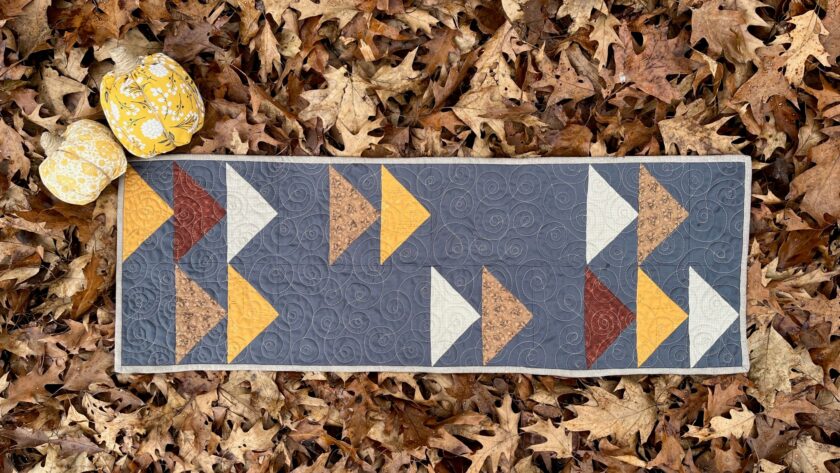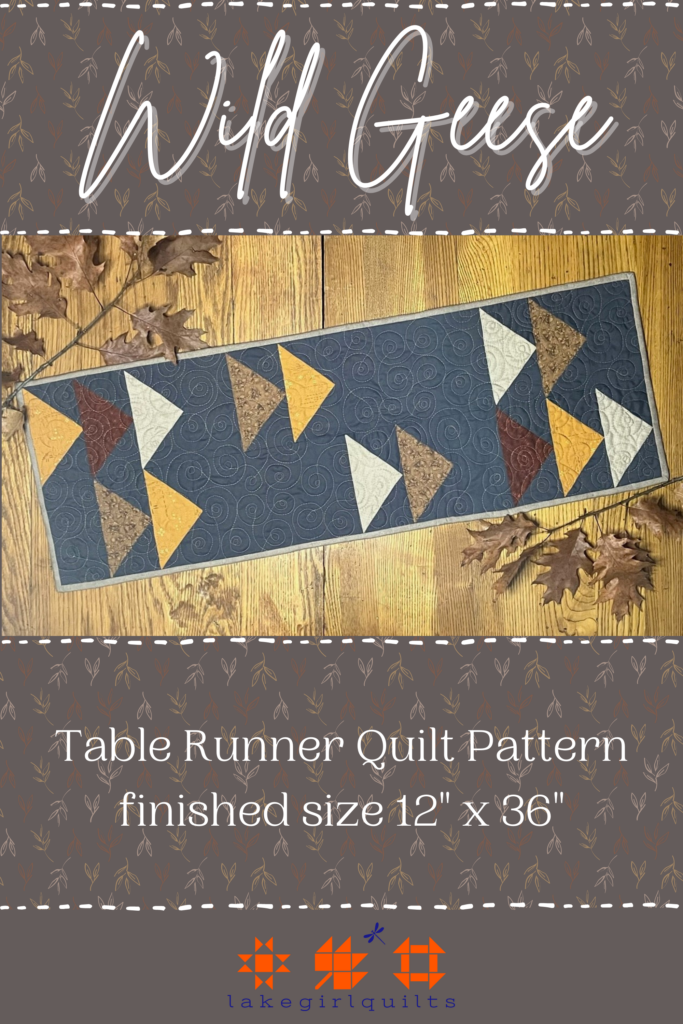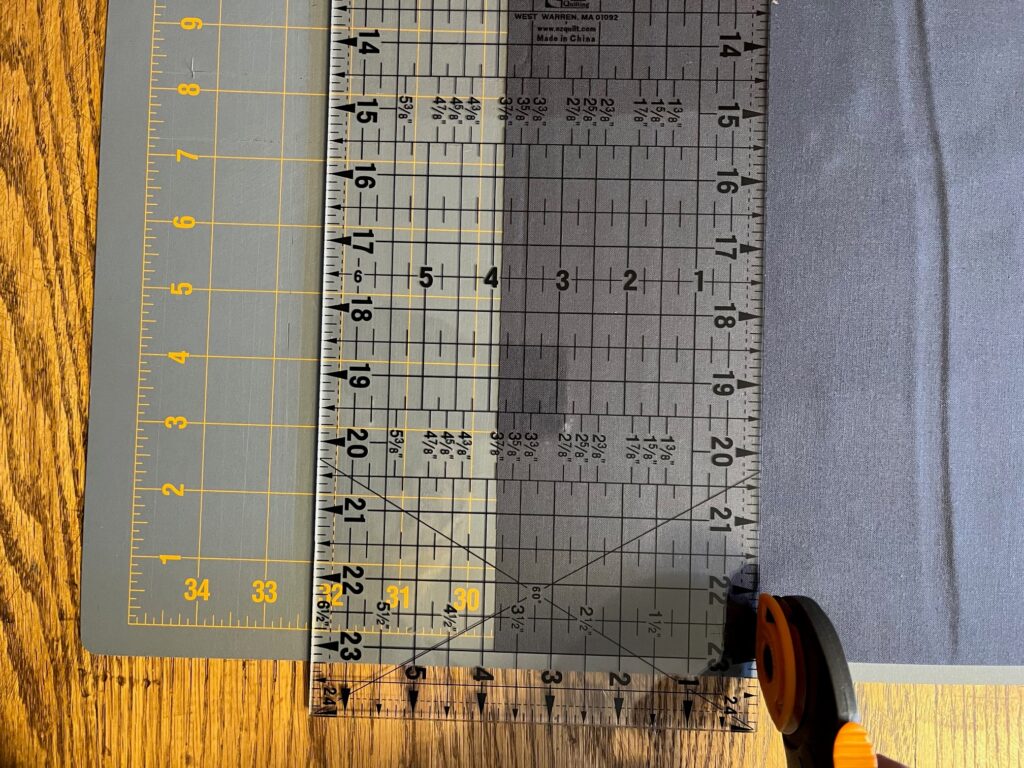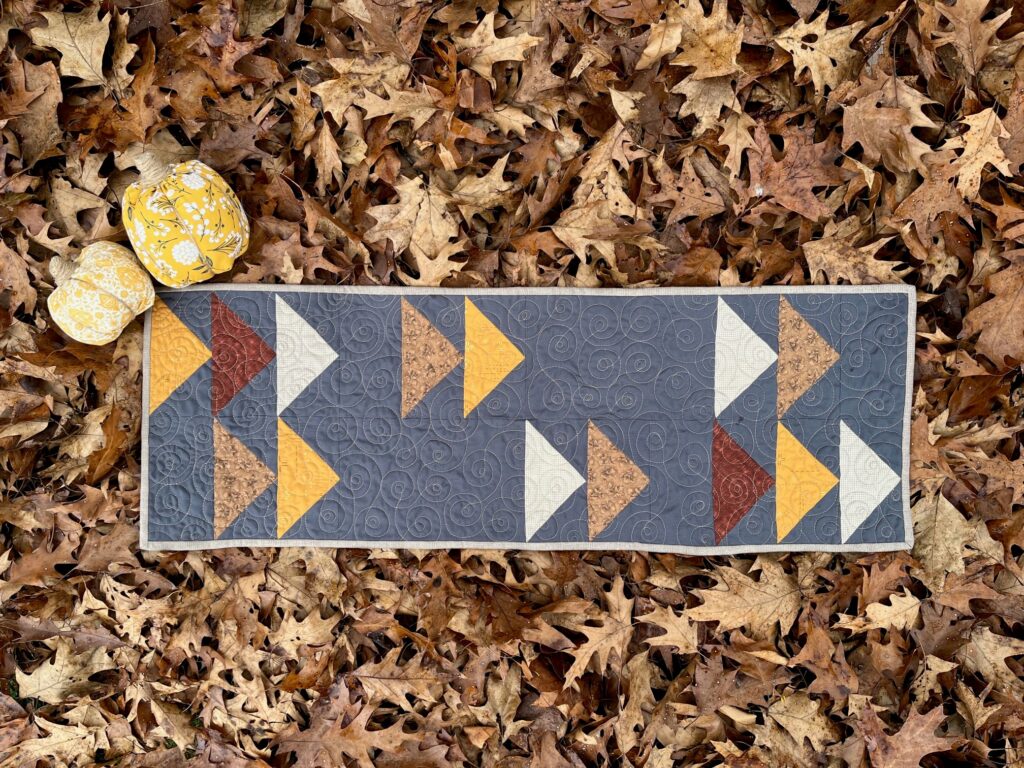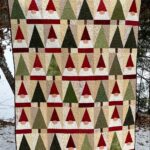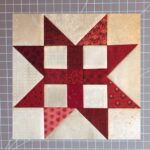This stunning Wild Geese table runner quilt is an easy pattern. Measuring 12” x 36”, this quilt is the perfect size to decorate a table. Or add a sleeve to the back of the quilt, and hang these flying geese on a wall!!
This quilt comes together so quickly when you use the Easy No Waste Flying Geese technique, you can easily sew it in a few evenings or over the weekend!!!
The inspiration for this quilt comes from the November skyline at lakegirlquilts. The geese are heard and seen flying south. Most of the trees have lost their colorful leaves and the stunning colors that remain are the amber of aspen and tamarack, the rust of oak, the cognac of acorns, and the taupe of birch and bare branches. All set against the stark gray of the late autumn sky. These colors are so warm and cozy!
Post contains affiliate links and we earn commissions if you shop through the links on this page. For more information please read the disclaimer on the Privacy Policy page.
General Sewing Directions for the Wild Geese Table Runner Quilt
The directions for this Wild Geese table runner quilt are for rotary cutting, machine piecing, machine quilting, and the binding is hand-stitched to the quilt back.
Accurate cutting and sewing enhances your final product. Pin your pieces together before sewing them to ensure proper seam alignment.
Use a ¼” seam allowance. I recommend using a special presser foot with a ¼” guide if you have one for your machine. This will help you get uniform seams, and matching corners!
Follow the directions described below as you press open the seams. Each block is pressed in the opposite direction of the previous block to eliminate bulk and help seams to lay flat.
The pattern calls for machine quilting, but this quilt is so small you could easily hand quilt it!
All other directions for making this pattern are included below. But you can purchase a printable, ad-free PDF pattern in the lakegirlquilts shop on Etsy!
Fabric Requirements for the Wild Geese Table Runner Quilt
The geese are created using a variety of amber, rust, taupe, and cognac brown prints, along with dark gray solid fabric for the background.
Each color calls for about ¼ yard of fabric, so this is a great quilt to make with fat quarters! Have fun choosing your color palette, and remember…there are no rules!!
Amber Fabric: 1 fat quarter
Rust Fabric: 1 fat quarter
Taupe Fabric: 1 fat quarter
Cognac Fabric: 1 fat quarter
Dark Gray Fabric: The total fabric needed is about ½ yard.
Binding Fabric: I used a darker taupe. The total needed is ¼ yard.
Backing Fabric: You’ll need about ½ yard to form a 16” x 40” piece, use coordinating fabric.
Batting: You’ll need a piece of 16” x 40” thin cotton batting (like Warm & Natural) to make this quilt.
Directions for Rotary Cutting
Use a rotary cutter, plastic ruler, and cutting mat to cut all fabric pieces for this Wild Geese table runner quilt . If you’re new to quilting here is an article on basic quilting supplies! You can also check out this tutorial on using a rotary cutter!!
The flying geese blocks for this quilt are made using the “Easy No Waste Flying Geese” method. This method makes four flying geese at a time, reducing the overall cutting and sewing time!
Amber Fabric: Cut 1 – 7 ¼” square.
Rust Fabric: Cut 1 – 7 ¼” square.
Taupe Fabric: Cut 1 – 7 ¼” square.
Cognac Fabric: Cut 1 – 7 ¼” square.
Dark Gray Fabric: Cut 16 – 3 7/8” squares
and Cut 4 – 3 ½” x 6 ½” strips and Cut 2 – 6 ½” x 9 ½” strips
Binding Fabric: Either Cut 3 – 2 ½” x 44” strips or Cut 6 – 2 ½” x 22” strips.
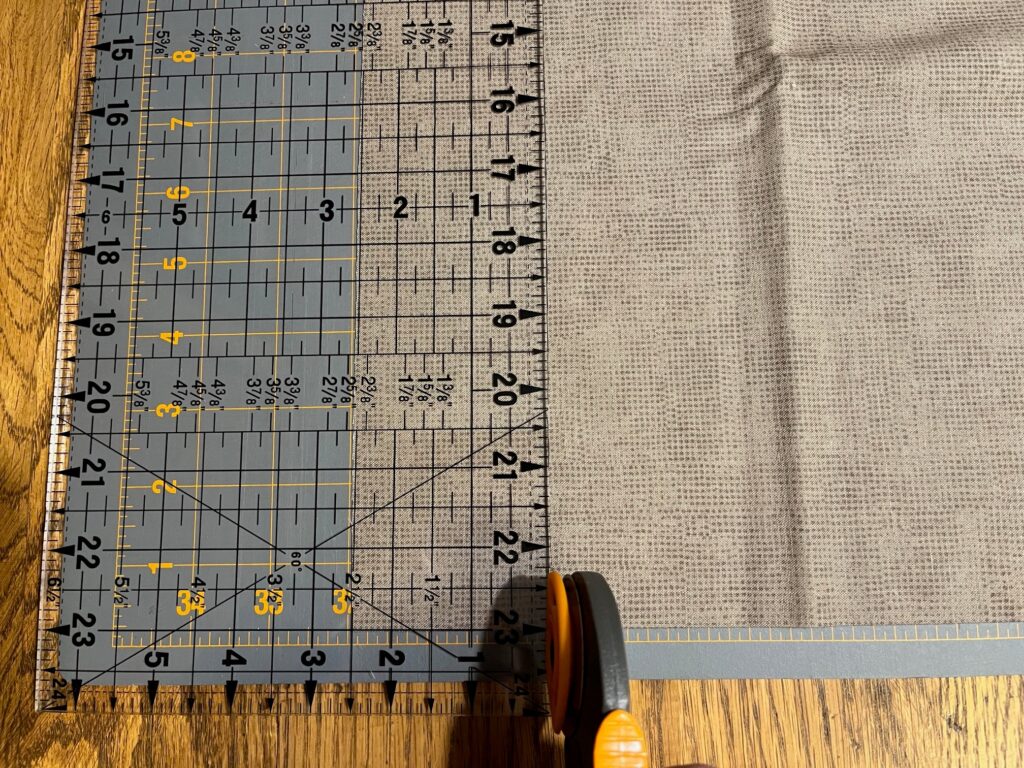
Backing Fabric: You’ll need about ½ yard to form a 16” x 40” piece, use coordinating fabric.
Batting: You’ll need a piece of 16” x 40” thin cotton batting (like Warm & Natural) to make this quilt.
Sew the Easy No Waste Flying Geese Blocks
Follow these steps to make 4 flying geese for each color, for a total of 16 blocks. The Wild Geese table runner quilt pattern requires only 14 blocks, so you’ll have 2 “orphan” flying geese blocks left over that you can use in another project someday!
Using a fine pencil and a straight edge draw a diagonal line from corner to corner on the back of four gray squares.

Align two gray squares onto opposite corners of the large colored square, right sides together and the diagonal line facing up.
The two small squares will overlap just a little bit in the middle. Pin them in place.
Sew a ¼” seam on each side of the diagonal lines. Remove the pins as you come up to them. Don’t forget to sew a ¼” seam on BOTH sides of the line!
Cut apart on the drawn line to separate into two units. You can use either a rotary cutter or carefully cut with a scissors to separate into two units. I prefer to just cut them apart with a scissors, but I make sure I am careful to cut directly on the line!! Press the unit open toward the small “sky” pieces.

For each of the two units align a small square onto the “free” corner with the right sides together. The diagonal line is facing up. Sew a ¼” seam on each side of the diagonal lines.
Cut apart on the drawn line of each unit to separate into four flying geese!
Press the flying geese open toward the small “sky” pieces.

The flying geese blocks should measure 3 ½” x 6 ½”, trim if needed.
Assemble the Quilt Top
Now that you have all of the flying geese sewn and all of the gray strips cut, it’s time to assemble the quilt top!

Lay out the flying geese blocks and the gray strips according to the diagram above. Play with the color order of your flying geese until you get a combination that you like. Remember, you’ll have 2 “orphan” flying geese blocks left over.

You’ll actually sew 2 rows, then sew the rows together to form the quilt top.
I like to start sewing my blocks from left to right. Sew the first flying geese block on the left to the second one on the left, right sides together and making sure the point of the blocks are facing in the accurate direction. Continue in this manner with all of the blocks and strips, adding to row one as you go.
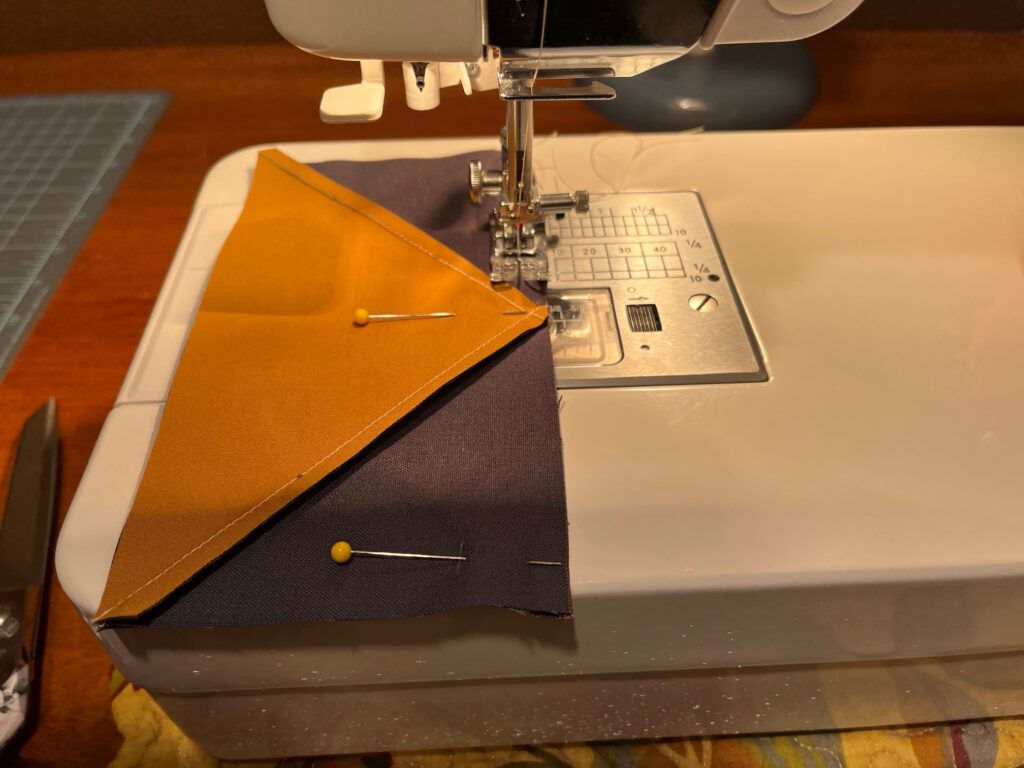
Press all the sewn seams of ROW 1 to the left. Be careful to just “press” and NOT “iron” the seams in a back-and-forth motion, or your quilt blocks will stretch out of shape.
Repeat this same process to sew ROW 2. Press all the sewn seams of row two to the right.
Nesting Quilt Block Seams
By using this rotating direction of pressed seams, you will have nicely nested seams and less bulk when you sew the two rows together. This method of pressing distributes the bulk, which will make you happy when machine quilting your project! Bulky seams can lead to bumpy quilting patterns, broken thread, and overall unevenness of your quilt top.
Now that you have the two rows pressed, sew them together! Pin Row 1 and ROW 2 together, right sides facing together. Make sure to line up the seams, and pin to hold them in place. Remove the pins as you come to them when you’re stitching the ¼” seam. Press the center seam to either the top or bottom, or if you prefer you can press the seam open.
Layering the Top, Batting, and Back
I refer to layering the quilt as “sandwiching”. You need to sandwich the top and back with the batting in the middle. For a larger quilt, this process takes a bit more time and steps. But for this small quilt, it’s a breeze to sandwich the layers together!
Tape the Backing Down
On a table or countertop, use masking or painter’s tape to tape down the backing fabric. As you tape the back to the table, you’ll want to make sure the fabric is smooth, without wrinkles. Also, make sure the right side of the fabric is facing down!
Add the Batting
Lay the batting on top of the taped-down quilt back, and move your hands across it to smooth it all over. This will get rid of any wrinkles in the batting, and help to adhere it to the backing fabric.
Place the Quilt Top
Once you have the batting placed on top of the quilt back, center the quilt top over the two bottom layers. Right side facing up, of course! The two bottom layers of the quilt (the back and the batting) should extend about 2” all around the outside edges of the quilt top.
Move your hands across the quilt top to smooth it all over, and help remove any wrinkles. This will also help adhere the quilt top to the batting a little bit.
How to Baste the Quilt Layers Together
Once you have the top of the quilt all smoothed out, use large safety pins to baste all three layers together. I like to use 1 ½” stainless pins, and I keep them all in a cute old canning jar that was my grandma’s.
Put a pin in each corner of the quilt sandwich and around the entire quilt every 4-5 inches so the three layers don’t move around when you’re machine quilting this project. You really don’t want to use more pins than this or you’ll be needing to stop a lot when you’re quilting to remove pins, which upsets the mojo of your quilting rhythm, lol!

How to Machine Quilt the Quilt
I used a cute swirly cinnamon bun design to machine quilt my layers together. Here is a video on how to machine quilt the cinnamon bun design!

Use whatever free-motion stitch you’d like. You’ll need a darning foot to free-motion quilt, and you’ll need to either be able to lower the feed dogs on the machine or place a special cover over them. If you’re using a straight stitch to machine quilt you’ll need a walking foot.
As an alternative, you can hand-quilt these layers together too.
How to Bind a Quilt
When you’ve finished quilting the layers together, it’s time to bind the edges of your quilt! I’ll do my best to describe the binding process below. You can also check out this video on how to bind a quilt!
Prepare the Binding Strip
Sew cut strips together along 2 ½” end to form a long binding strip. You’ll need the strip to measure about 108” long (you’ll trim it later). Press seams open. Press this strip in half lengthwise, right sides facing out, so the strip now measures 1 ¼” x 108+”.
Sew the Binding Strip to the Quilt
Begin to sew the raw edge of the binding to the quilt by pinning it along one side. Be careful to sew the raw edge of the binding strip to the quilt, not the folded edge!
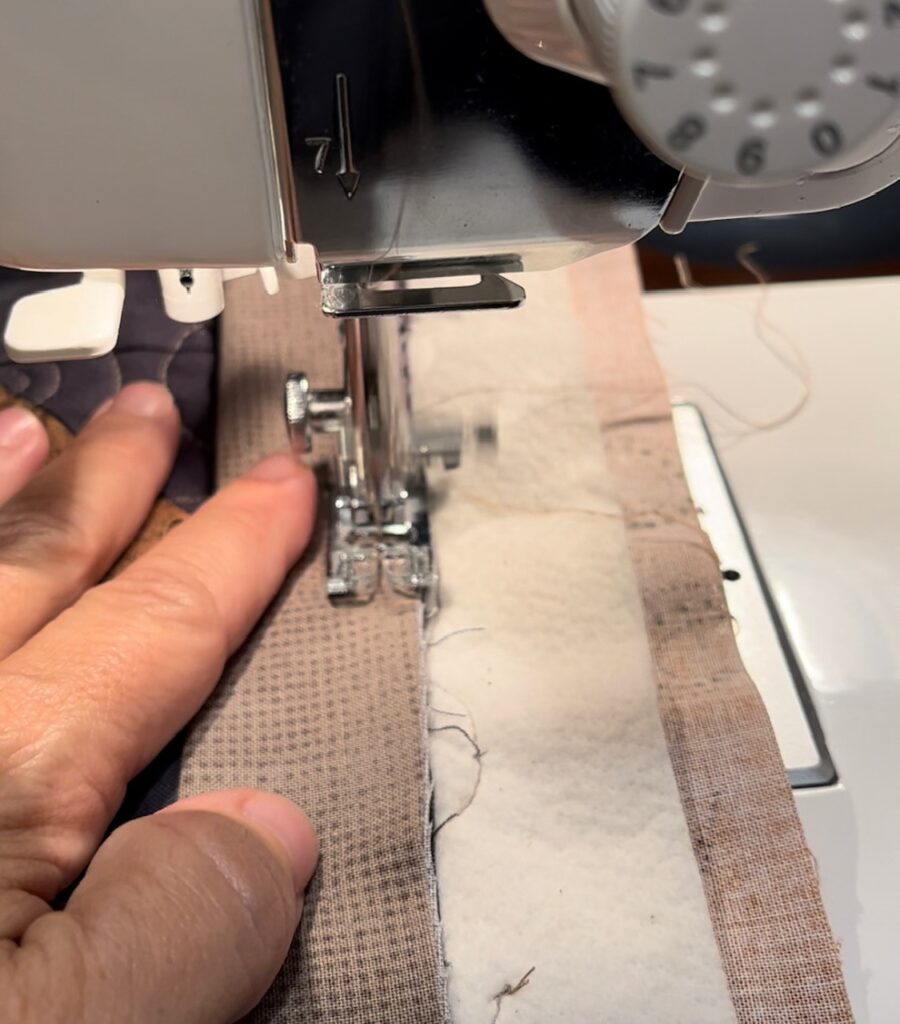
I usually start sewing the binding strip in the middle of the quilt side that I’m starting with. Start sewing about 5” in from the end of the binding strip, leaving a hanging “tail” on the binding. You’ll sew this to the end of the binding strip when you finish sewing all along the sides of the quilt.
Stop sewing on the first side ¼” from the corner, use a pin to mark this location and sew right up to it. Backstitch a bit, and cut your thread but DON’T cut the binding strip.
Making the Mitered Corner
Now, remove the quilt and binding strip from your machine and fold the binding strip straight up so it’s perpendicular from the side you were just sewing on.
Fold the binding strip back down on itself and match it to the edge of the quilt you just sewed it to, and the next edge of the quilt you’re about to sew it to. Pin this fold in place, and pin the binding strip to this edge of the quilt and continue to sew it, again stopping ¼” from the next corner and repeating the folding process described above.
Continue in this manner until you are on the last side of the quilt, the side you started on.
Connecting the Ends of the Binding
Stop stitching about 6” from where you started. Backstitch and cut the thread (but not the binding strip, not yet!), remove the quilt and binding strip from the machine.
You now have two “tails” of the binding strip, one from where you started stitching it to the quilt and one from where you just stopped. You’ll need to join these tails together so that you have a continuous binding strip to finish sewing down to the quilt. This can be tricky!
Place the tails of the binding strip so they meet in the middle of the section of the quilt that the binding still needs to be sewn to. Fold these binding strips over on themselves and finger press. Cut ¼” toward the outside of each of the folds.
Pin and sew the ends together with a ¼” seam (right sides together). Finger press the seam open. Continue to sew the now continuous binding strip to the quilt.
Trim the Batting and Back
Trim the batting and quilt back to ¼” from the edge of the quilt top. I use a ruler and a rotary cutter to accomplish this task. Work carefully, so you don’t cut into your quilted project.
Hand-Stitch the Folded Binding Edge to the Quilt Back
Here is my FAVORITE part of the process, hand-sew the folded edge of the binding strip to the back of the quilt. When you get to the corner, carefully turn the corner right-side out to make a nice, mitered corner. I tack a few stitches up the corner to hold it in place, and then continue stitching along all sides and corners until…VOILA! Your binding is complete!
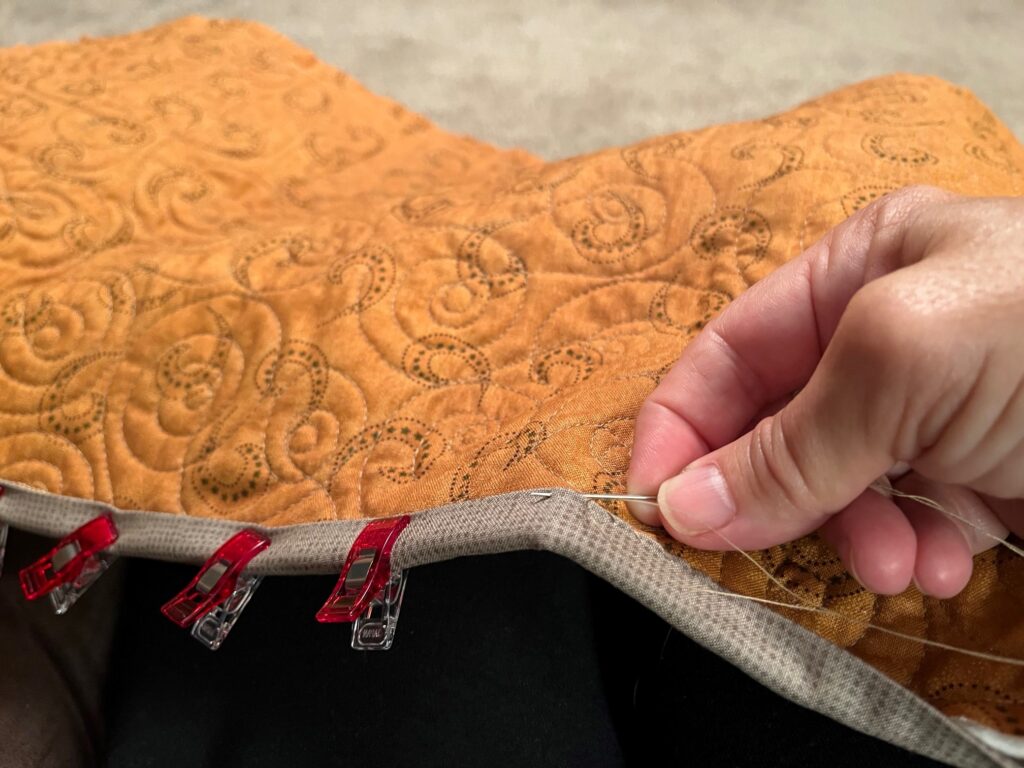

If you’d like, you can add a label to the back of your quilt.
Happy Quilting!
Bonnie
Purchase an ad-free PDF of the Wild Geese table runner quilt pattern on Etsy!

